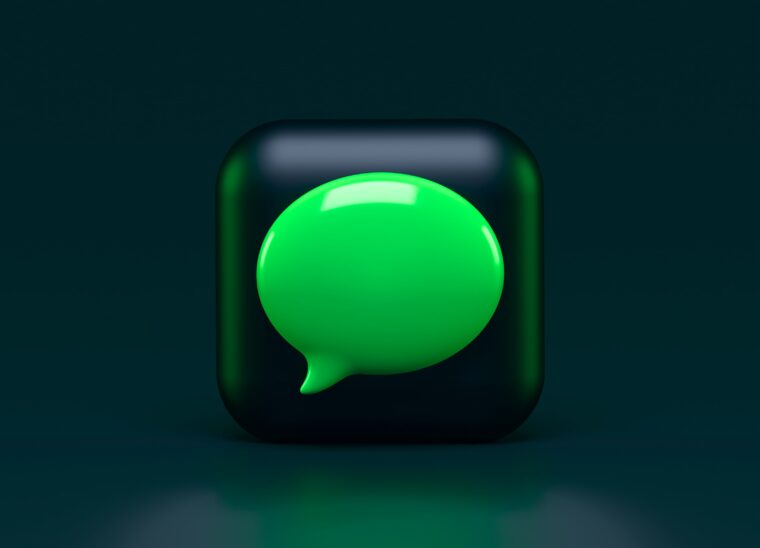Just as humans need practice when they're learning to talk, chatbots need the training to improve their communications.
It's the simplest and most efficient way for a chatbot to succeed. In this article, we will introduce you to some basic concepts and the different phases of training a chatbot.
A chatbot is a conversational program. It allows you to provide information to consumers without having to queue up or resort to FAQs.
The implementation of chatbots in companies is a growing trend. They are typically used in customer support or information gathering.
An Oracle survey shows that 80% of companies already have or want to have a chatbot in their company by the end of 2020.
Data like this makes companies that specialize in chatbots want to offer the best possible product.
With AI or without AI
We can consider two types of chatbots: those with Artificial Intelligence (AI) and those without AI.
Chatbots with Artificial Intelligence are the most complex chatbots. These allow a fluid conversation between bot and user.
This type of chatbots uses technologies such as Natural Language Processing (commonly referred to as NLP) and "machine learning".
In short, NLP is an area that studies problems related to the automatic understanding of human languages.
Machine Learning is a method used in the construction of automatic models for data analysis.
Through these processes, the chatbot can respond, even when the input is not part of the knowledge base.
Chatbots without Artificial Intelligence are more basic, with limited interactions than the ones with AI. They rule by rigorous rules and always follow the path defined for them.
Do you understand the difference? In this article, we focus only on chatbots with AI, because they are the ones that need training.
AI Trainer: What comes before?
Before we reach the training stage, we have to go through two steps: building the knowledge base and launching the chatbot.
It's in the knowledge bases that all the "inputs" you have with your consumers will be. This data often corresponds to the most frequently asked questions to your company.
They can also be in the database, elements that facilitate the processing of the language. For example, compound words or synonyms.
Compound words are expressions that have more than one word but together have only one meaning.
See, for example, the case of the expression "citizen card". "Card" and "citizen" have the respective meanings, but when combined, they have only one, corresponding to the card that identifies a person.
This type of information is essential because it helps the AI to process incoming entries more easily.
As one of the goals is to have a perfect simulation of human dialogue, it is convenient for your chatbot to notice social clues. When they greet you and say goodbye, or when they give a stimulus that is not related to the product.
That's why the "small talk" block is so important. It's not part of the database, but it gives the bot personality.
In short, to have a great knowledge base, it needs to have:
- Frequently asked questions and their answers
- Synonyms
- Compound words.
And to have a chatbot with personality, just define the modules you want it to answer. For example, talking about the weather, telling the time, and telling jokes, among others.
After all this, just launch your chatbot. Learn how in the article Chatbot Templates: How to Have a Faster Launch.
So how do you train a chatbot?
After passing the first two phases of creating and publishing your chatbot comes the central part of this article: the training of the AI.
Like everything in life, only after knowing the theory can you apply and train the knowledge. The same happens with chatbots.
As people interact with the bot, it collects the so-called "user says". The "user says" are nothing more than the different ways of making the same request.
As unique people, it's infrequent to ask the same question in the same way.
At the time of collection, the bot arranges the request according to its existence in the knowledge base. That is, if it is already in the database, it gives the indicated answer. If it does not exist, it processes the sentence and provides the most appropriate response.
It is in the AI Trainer - the focus of this article - that all new "user says" are stored.
And, as the name itself indicates, it is where you can train the artificial intelligence of your chatbot.
In the AI Trainer, you can find information like:
- If the bot made it, had difficulty or could not respond
- In the cases where you replied, what was your response
- To which category does the question belong
- In general, which is the most frequently asked question category
- Among others.
It's from this data that you can train your AI and increase your knowledge base.
In cases where the bot did not react as it should, you will teach him the correct way.
Imagine, if he had doubts about the answer and still gave one. Your role is to make sure it was the right one. If it weren't, you would tell him what the correct answer is.
The same happens for those who couldn't answer or answered wrongly.
Think of AI Trainer as a school. Where, despite previous knowledge, there is always room to learn more and keep your chatbot updated.
The Visor.ai Tool
To optimize the training of your virtual assistant, Visor.ai has designed a feature called "AI Trainer", which is very intuitive and easily accessible.
It was designed with the information we mentioned above and some more in mind.
In Visor.ai's AI Trainer, besides analyzing the answers given, you can add new FAQs directly.
The term FAQ is used here as a kind of group. That is, it is almost like a folder. Each FAQ has a theme, and inside it's stored all the ways to ask about it.
In other words, FAQ corresponds to a "use case", a specific problem.
Imagine that many customers start asking a question about a particular topic, but there is still no answer in your knowledge base.
Well, in AI Trainer, you can add this FAQ, without having to go to the knowledge base, and instantly attach the respective "user say".
You can also analyze "user says" received between specific periods. For example, you run a campaign between X and Y days. You can select these days and examine whether the "user says" you received were about your campaign and whether they were well answered.
With a modern design, you do not need technical knowledge to be able to use it.
The AI Trainer Results
As already mentioned, it is essential to increase the knowledge of your chatbot continually.
It is with regular training that you can see the results. The more you train, the more results you will get.
But what are the results of your AI training?
Well, the answer is simple: efficiency.
The response efficiency of your chatbot increases exponentially, and so does the capability of your team.
By bot efficiency, we mean responsiveness without the involvement of human assistance. In other words, the bot responds to a request with only its intrinsic knowledge.
There is an improvement in efficiency due to the increasing acquisition of "user says". The higher the variety of requests for a response, the more likely it is to get the right solution.
The bigger your knowledge base is, the less training time you'll have to spend with your chatbot.
Take the Best Bank chatbot, which has an efficiency of about 80%. These numbers allow the team in charge of the bot to spend no more than 10 minutes a day on its maintenance.
It also increases the efficiency of your team as you have access to a variety of functions. If your chatbot is highly efficient, you only have to solve the most complex cases that the bot has missed.
If you want to know more about this fantastic tool that is the AI Trainer from Visor.ai, contact us now!


